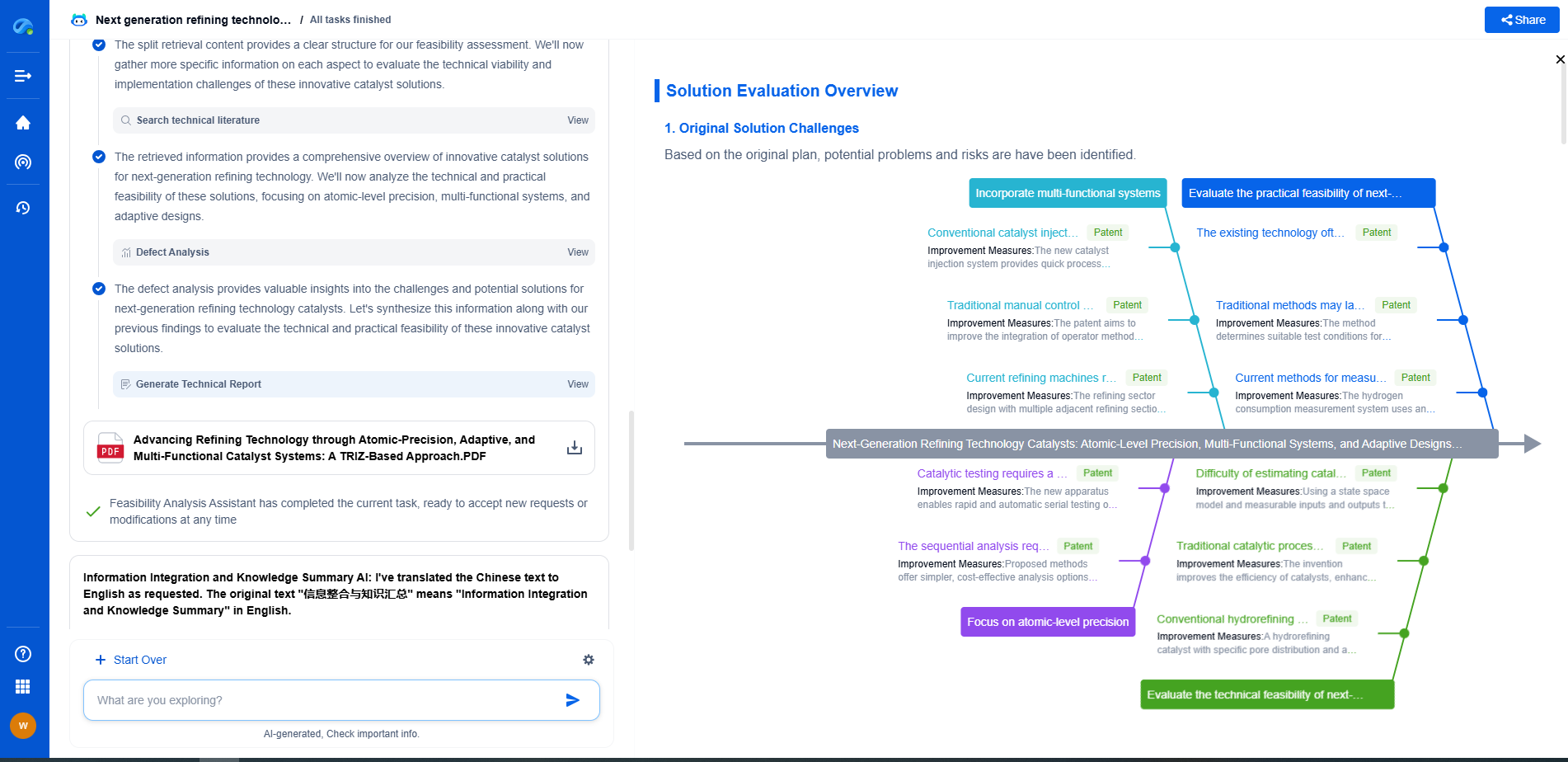What is an optical chopper and how does it improve signal-to-noise ratio?
JUL 15, 2025 |
An optical chopper is a device used in various scientific and industrial applications to modulate a beam of light. By periodically interrupting the light path, optical choppers create a series of light pulses from a continuous light source. This modulation is crucial in experiments and applications where precise control of light is necessary, such as in spectroscopy, laser systems, and optical communication.
Optical choppers typically consist of a rotating disk with one or more apertures. As the disk rotates, these apertures allow light to pass through at specified intervals, effectively chopping the light beam into pulses. The speed and frequency at which the chopper operates can be finely adjusted, allowing for precise control over the modulation of the light source.
**Types of Optical Choppers**
There are several types of optical choppers, each designed for specific applications and requirements. The most common types include:
1. **Mechanical Choppers**: These are the most traditional form of optical choppers and use a rotating disk or blade to intermittently block and transmit light. They are highly reliable and can be used for a wide range of frequencies.
2. **Tunable Choppers**: Tunable choppers offer the flexibility of adjusting the chopping frequency without needing to change the mechanical components. This makes them suitable for applications requiring variable frequency modulation.
3. **Electronic Choppers**: Employing electronic means to modulate the light, these choppers often use acousto-optic or electro-optic modulation techniques. They are capable of very high-speed operation and are suitable for applications where mechanical choppers are not feasible.
**The Role of Optical Choppers in Improving Signal-to-Noise Ratio**
One of the primary benefits of using an optical chopper is its ability to significantly improve the signal-to-noise ratio (SNR) in various optical measurements. Here's how it works:
1. **Background Noise Reduction**: By modulating the light source, optical choppers help distinguish the actual signal from the background noise. When the light is chopped at a specific frequency, any noise that does not share this frequency can be filtered out, enhancing the clarity of the signal.
2. **Lock-in Amplification**: Optical choppers are often used in conjunction with lock-in amplifiers. These devices can isolate signals with a specific frequency and phase, further reducing noise and improving the SNR. By synchronizing the chopper and the lock-in amplifier, even weak signals can be detected with high accuracy.
3. **Preventing Overload**: In some cases, continuous exposure to intense light can lead to detector overload, contributing to noise. An optical chopper helps manage the light intensity by allowing only chopped pulses to reach the detector, which can enhance measurement accuracy.
**Applications of Optical Choppers**
Optical choppers are indispensable tools in a variety of scientific research and industrial applications, including:
1. **Spectroscopy**: In spectroscopy, optical choppers help improve the measurement of light absorption and emission, allowing scientists to obtain cleaner data.
2. **Laser Systems**: Choppers are used in laser systems to control beam intensity and timing, critical for applications requiring precise light modulation.
3. **Optical Communication**: In optical communication, choppers assist in encoding information onto light beams, facilitating efficient data transfer.
4. **Material Testing**: They are used in material testing to investigate properties like reflectance and transmittance, where accurate light modulation is necessary.
**Conclusion**
Optical choppers play a vital role in enhancing the signal-to-noise ratio, making them essential tools in numerous scientific and industrial settings. By providing precise modulation of light beams, they contribute to more accurate and reliable measurements. Whether in reducing background noise or facilitating complex experiments, optical choppers are key components in advancing optical technologies. Embracing the use of optical choppers can lead to significant improvements in the quality and accuracy of optical data collection and analysis.
From interferometers and spectroradiometers to laser displacement sensors and fiber optic probes, the field of optical measurement is evolving at light speed—driven by innovations in photonics, MEMS integration, and AI-enhanced signal processing.
With Patsnap Eureka, biomedical innovators can navigate cross-domain insights in optics, electronics, and biocompatible materials, while discovering IP trends across academic, clinical, and commercial datasets.
💡 Fuel your next breakthrough in optical health tech—start using Patsnap Eureka to unlock deep insights today.
- R&D
- Intellectual Property
- Life Sciences
- Materials
- Tech Scout
- Unparalleled Data Quality
- Higher Quality Content
- 60% Fewer Hallucinations
Browse by: Latest US Patents, China's latest patents, Technical Efficacy Thesaurus, Application Domain, Technology Topic, Popular Technical Reports.
© 2025 PatSnap. All rights reserved.Legal|Privacy policy|Modern Slavery Act Transparency Statement|Sitemap|About US| Contact US: help@patsnap.com

